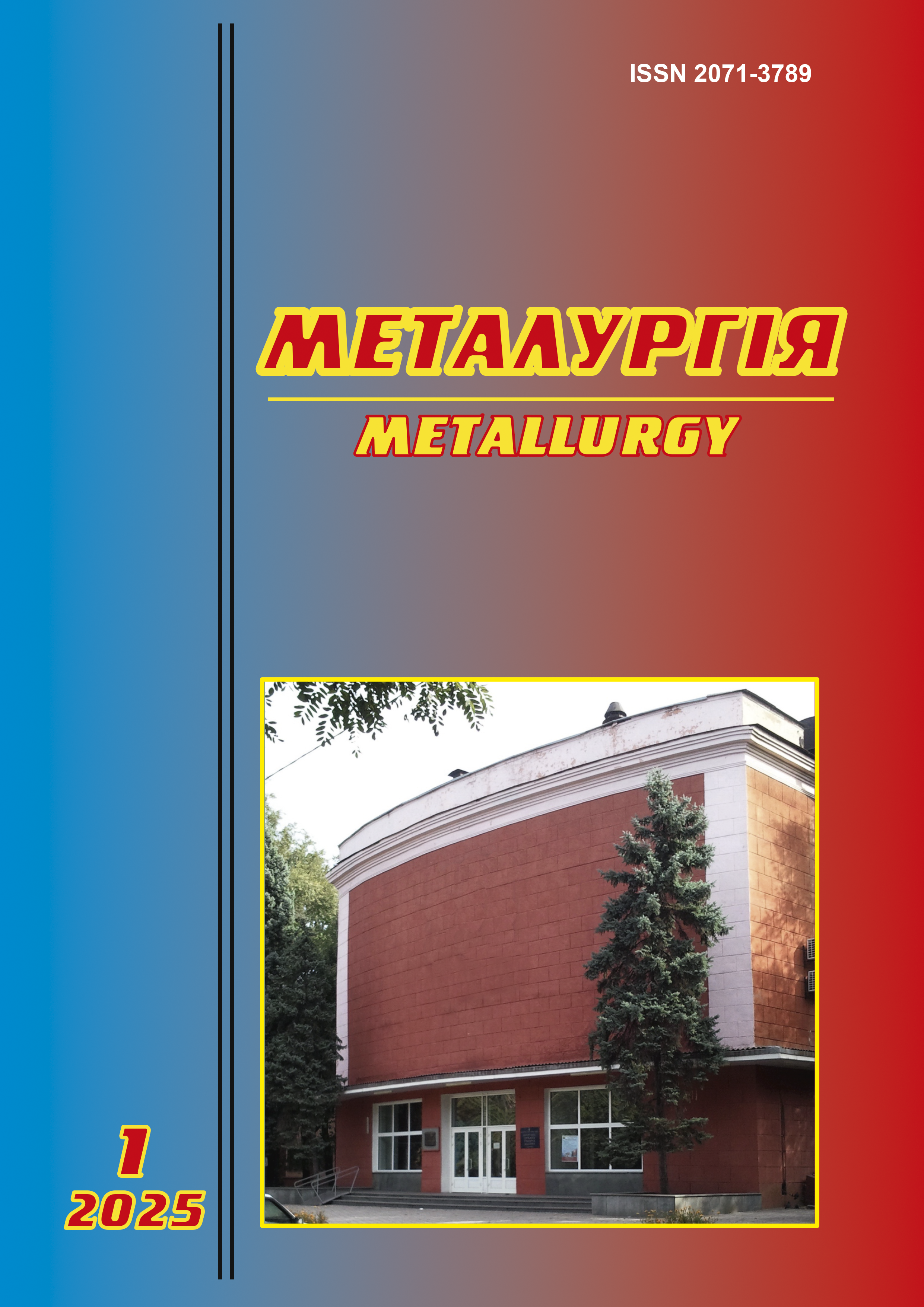MATHEMATICAL MODELING AND OPTIMIZATION OF TECHNICAL AND ECONOMIC INDICATORS OF PRODUCTION AND USE OF METALLISED MOLYBDENUM CONCENTRATE
Abstract
In the work, a study of technical and economic indicators of an active industrial experiment of smelting and using metallized molybdenum concentrate (spongy ferromolybdenum) was carried out. In domestic practice, the technology for the production of a new alloying material based on molybdenum in mine electric furnaces was developed and exploited for a long time and was optimized. A mathematical model of technical and economic indicators was developed, taking into account the largest number of technological factors. The result of mathematical modeling is a multifunctional indicator system. The limits of production indicators and expenditure coefficients of bulk materials were established and optimized, which made it possible to stabilize the quality of the target product.In the performed assessment of end-to-end economic efficiency when obtaining a new alloying material, there is a reduction in the cost of production technology and a reduction in expenditure ratios. In the assessment methodology, not only the general recommendations of the ratio were used, but also the original factors that were developed in actual work. In the efficiency assessment calculations, an improved technique was used with the specification of the relevant coefficients and prices for such materials as standard ferromolybdenum FMo52…FMo60, molybdenum concentrate of grades KMo1…KMo3, FMoG1…FMoG3 and steel P6M5.The new alloying material based on molybdenum FMoG differs from traditional ferroalloys smelted by ore or metalothermic methods by favorable technical and economic indicators: 7-8 times higher rate of assimilation of molybdenum by molten steel, reduction of oxidation potential during alloying – assimilation of chromium, molybdenum and vanadium increases by 4-10%.On the example of the production and use of spongy ferromolybdenum for steel alloying, an economic efficiency assessment was performed, which confirms the expediency and perspective of using alloying materials based on refractory elements in metallurgy.
References
2. Григор'єв С. М., Петрищев А. С. Сучасне ресурсозбереження в металургії спеціальних сталей (техніко-економічна версія) : монографія. Запоріжжя : ЗНУ, 2016. 532 с.
3. Тарасов О.В. Мінеральна сировина, нові технології та розвиток виробництва тугоплавких металів у Росії та країнах СНД. Кольорові метали, 2011. № 6. С. 12-24.
4. Jung, W.-G. (2014). Recovery of tungsten carbide from hard material sludge by oxidation and carbothermal reduction process. Journal of Industrial and Engineering Chemistry, 20 (4), 2384–2388. doi: 10.1016/j.jiec.2013.10.017.
5. Pashkeev K. Y., Pashkeev I. Y., Mikhailov G. G., Sudarikov M.V. Tarasov P. A. Investigation of aluminothermic reduction of wolframite concentrates. Bulletin of the South Ural State University. Series: Metallurgy, 2015. V. 15, №. 2. P. 13-19.
6. Leont'ev L. I., Grigorovich K. V., Kostina M. V. The development of new metallurgical materials and technologies. Part 1. Steel in Translation. 2016. Vol. 46, Issue I.P. 6-15. doi: 10.3103/s096709121601006x.
7. Kozyrev N. A., Bendre Y. V., Goryushkin V. F., Shurupov V. M., Kozyreva O. Y. Thermodynamics of WO3 Reduction by Carbon. Bulletin of the Siberian State Industrial University. 2016. № 2(16). Pp. 15-17.
8. Ryabchikov I. V., Belov B. F, Mizin V. G. Reactions of metal oxides with carbon. Steel in Translation. 2014. Vol. 44, Issue 5. P. 368-373. doi: 10.3103/s 0967091214030206.
9. Shveikin G. P., Kedin N. A. Products carbothermal reduction of tungsten oxides in argon flow. Russian journal of inorganic chemistry. 2014. Vol. 59, Issue 3. P. 153-158. doi: 10.1134/s0036023614030206.
10. Kuzmichev E. N., Nikolenko S. V., Balakhonov D. I. Obtaining tungsten carbide from scheelite concentrate by concentrated energy flows. Chemical Technology. 2017. No. 3. P. 113-118.
11. Grigoriev D.S. Some kinetic regularities of the carbon-thermal reduction of a mixture of high- speed steel scale with additions of scheelite concentrate. Metals and casting of Ukraine. 2010. № 9-10. Pp. 57-61.
12. Tsivirko E.I., Grigoriev D.S. Some phase and structural transformations in the carbon-thermal reduction of a mixture of dross of high-speed steels with additions of scheelite concentrate. New materials and technologies in the metal industry and machine-based machines. 2010. № 2. P. 90-94.

 ISSN
ISSN 


